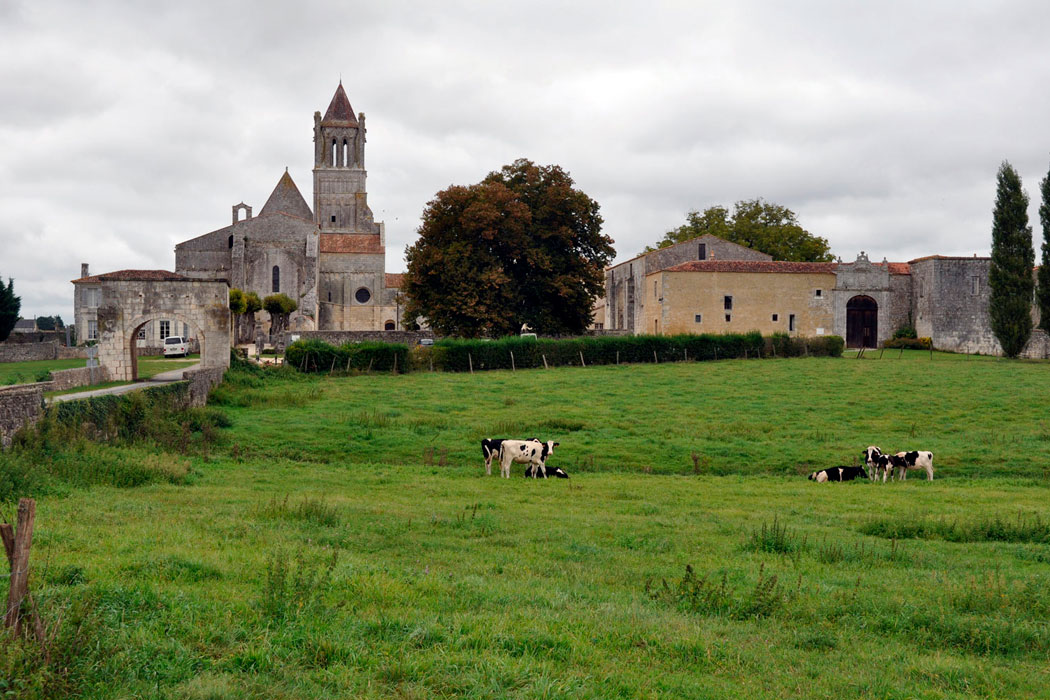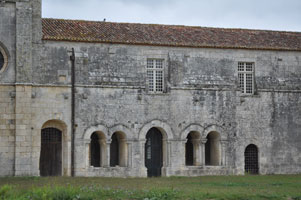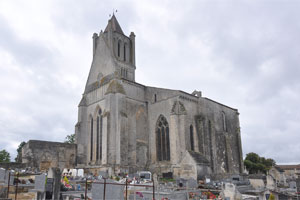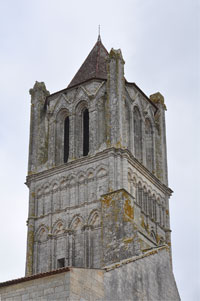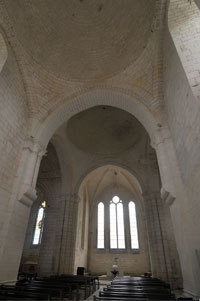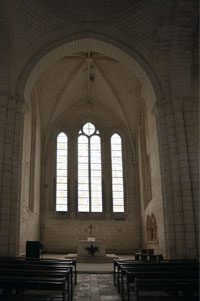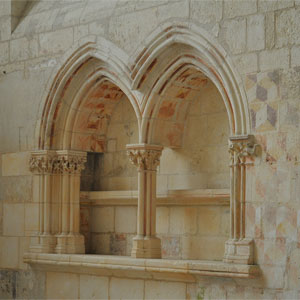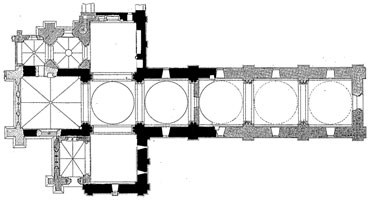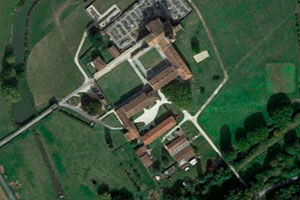Abbey of Notre-Dame de Sablonceaux
Canonry of Sablonceaux / Sabloncellae / Sabluncellis
(Sablonceaux, Charente-Maritime)
The Augustinian canonry of Notre-Dame de Sablonceaux was founded between 1127 and 1137 by Geoffroy de Louroux, a figure associated with the eremitic tradition and the organiser of the first canons who gathered here. The establishment of this house was supported by Duke William X of Aquitaine († 1137), who had granted Geoffroy the site of Sablonceaux —as well as Fontaine-le-Comte.
Geoffroy de Louroux was a prominent figure of his time; he was connected with Bernard of Clairvaux, who encouraged him to abandon the eremitic life, and in 1136 he was appointed Archbishop of Bordeaux. In addition to Sablonceaux, Geoffroy also took part in the foundation of the canonries of Fontaine-le-Comte (Vienne), l’Isle de Médoc, and Sainte-Marie de Pleine-Selve (both in the Gironde). The continued protection of the ducal house made possible the construction of a large monastic church and a period of prosperity throughout the 13th century.
The house suffered the effects of the Hundred Years’ War and had to be restored, now in Gothic style. After a period of decline and weakened discipline, the monastery was plundered and burned by the Huguenots in 1568, and again in 1622. At that time, it was in a precarious state and came under the commendatory system. It was later restored and, in 1633, reformed by the canons of Chancelade (Dordogne), upon whom it became dependent.
The church also assumed parish functions. In 1723, its ruinous condition was documented, prompting a new phase of restoration. The community remained active until the Revolution; in 1791 it was sold as national property. During the 19th century, the buildings gradually fell into ruin, a condition that lasted until well into the 20th century. From the second half of that century, restoration began, and in 1986 the site was revived with the arrival of members of the Chemin Neuf Community.
The church is a single-nave construction with a transept, covered with domes. Of the three bays of the nave, only the first—closest to the crossing—survives. These structures date back to the original foundation in the 12th century. The chevet is later, from the 13th century. Next to the church is the site of the vanished cloister; the surrounding buildings date from the 12th century but have undergone later alterations.
- BEAUNIER, Dom (1910). Abbayes et prieurés de l'ancienne France. Vol. 3: Auch, Bordeaux. Abbaye de Ligugé
- BRUTAILS, Jean-Auguste (1922). Geoffroi du Louroux, archevêque de Bordeaux de 1136 à 1158, et ses constructions. Bibliothèque de l'École des Chartes, vol. 83
- EYGUN, François (1979). Saintogne romane. La nuit des temps, 33. Zodiaque
- LEFÈVRE-PONTALIS, Eugène (1913). L'église abbatiale de Sablonceaux (Charente-Inférieure). Congrès archéologique de France, LXXIXe session. Paris: Société française d'archéologie
- MASSON, Juliette (2012). Geoffroi du Loroux et l'architecture religieuse en Aquitaine au XIIème siècle. Vol. I. Tesi doctoral. Université Michel de Montaigne - Bordeaux III
- MASSON, Juliette; i altres (2020). L’abbaye Notre-Dame de Sablonceaux. Charente-Maritime. Monastères en Santonge. Congrès Archéologique de France, 177e session. París: Société Française d’Archéologie
- SAINT-MAUR, Congregació de (1720). Gallia Christiana in provincias ecclesiasticas distributa. Vol. 2. París: Typographia Regia
- TONNELLIER, Paul (1984). L'abbaye de Sablonceaux: étude historique et archéologique. Saintes: Delavaud
